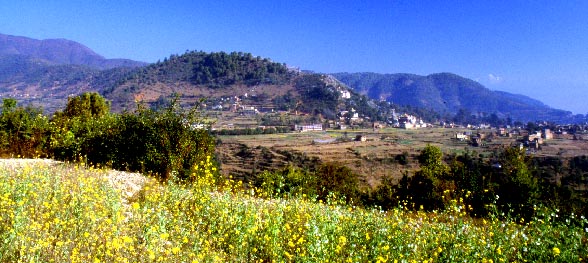
Yang-lé-shöd
December 1998
Ngak’chang Rinpoche and Khandro Déchen write:
Yang-lé-shöd is a ‘hidden land’ of Padmasambhava and Yeshé Tsogyel. The meaning of ‘hidden land’ has nothing to do with a place that cannot be found. Any traveller to Nepal can find Yang-lé-shöd, as it lies within the Kathmandu Valley – but although one can make the journey, the ‘hidden land’ remains hidden to those who cannot experience it. We are not discussing ‘experience’ here in some highly profound sense – as if one required great meditational ability or yogic visionary capacity, we are simply speaking of the capacity for devotion. If one cannot be moved to tears by music or by the kindness of a friend – one will never see this ‘hidden land’. If one has no relationship with one’s Lama – one will never see this ‘hidden land’. If one cannot let go of one’s preconceptions and the tight constraints of cultural conditioning – one will never see this ‘hidden land’. But if one can be simple and direct – it is there. It is there not only in the meditation caves of Padmasambhava and Yeshé Tsogyel, but in the wild flowers and the vast blue sky. Simply being in that place is to experience transmission.
